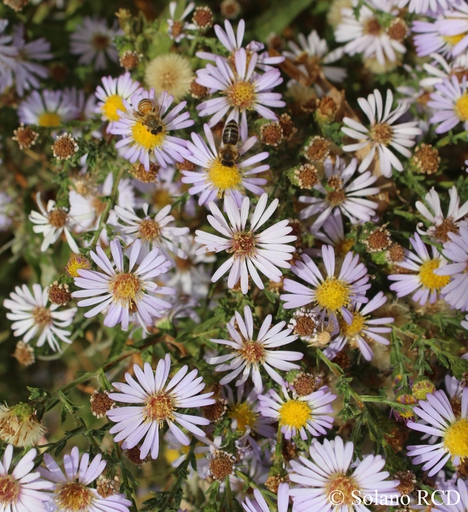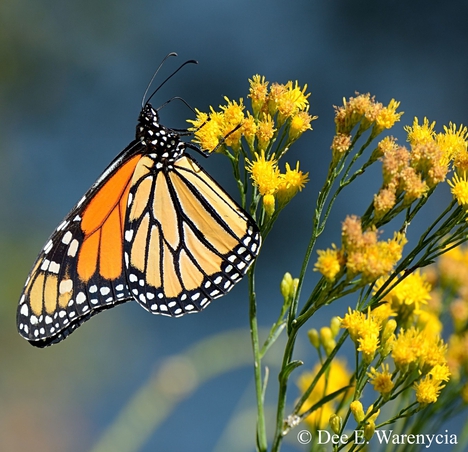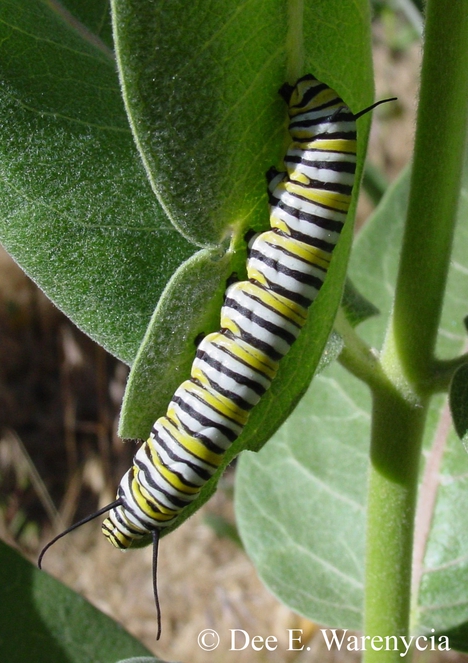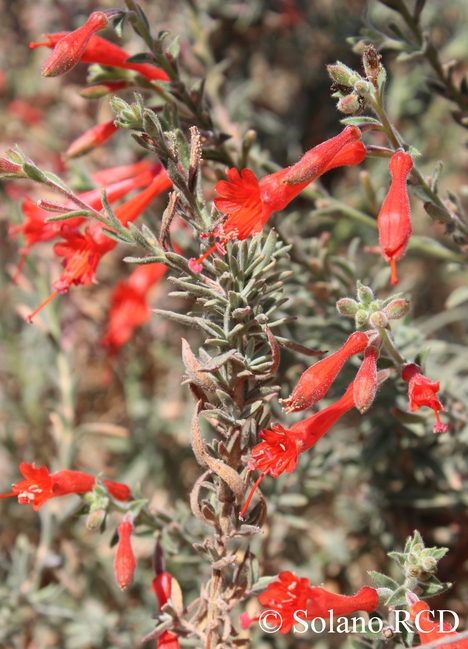The mix of native plants selected for Pond C bear flowers year-round. Winter bloomers (coyote bush, mulefat) give way to spring wildflowers (lupines, poppies), followed by summer blossoms (rose, milkweed, toyon), and finish with fall forbs (aster, CA fuchsia, goldenrod).
Year-round flowers provide year-round food for the bees and butterflies who visit flowers to sip nectar or feed on pollen. These insects are known as pollinators, since their activities pollinate many of the plants that produce food for humans as well as wildlife.
Milkweeds are the only plants that host monarch butterfly caterpillars. Adult butterflies lay their eggs on milkweed leaves. Once they hatch out, caterpillars feed on the leaves, accumulating toxins from the milkweed in their bodies. This makes the caterpillars taste foul and discourages birds from eating them. Here in Dixon, narrowleaf milkweed and showy milkweed are the best species for monarchs. Avoid planting non-native tropical milkweeds, since they host parasites that harm monarchs.
 |  |  |  |
| Can you see the bees collecting pollen from the aster flowers? | Monarch butterfly drinking nectar from a goldenrod | Monarch caterpillar on showy milkweed | CA fuchsia blooms in late summer |

